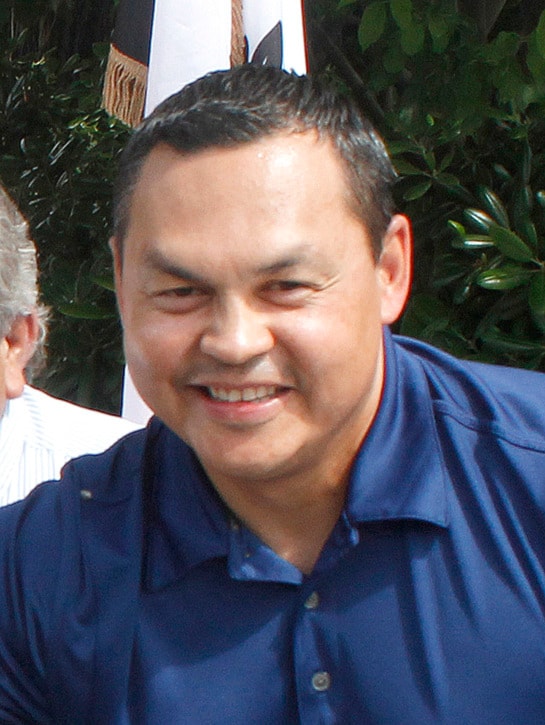Chief Jonathan Kruger said he has no problem with being transparent about how much he and other members of the Penticton Indian Band council are paid.
Kruger isn’t sure why the band’s official filings haven’t made it to the Government of Canada’s website yet, but said the band isn’t trying to fight the directive that all bands post the amount their chief and councillors earn.
The First Nations Financial Transparency Act requires bands to post audited financial statements along with remuneration and expenses for the chief and councillors.
“It’s not a big deal, not at all. My salary is $60,000 a year,” said Kruger, adding that the financial posting requirements is “last year’s news” for him.
“I posted my salary last year. We had an option to do it last year or have to do it this year. We have already put it in our annual report to our community members,” said Kruger, who added that he planned to check into why the PIB financials hadn’t made it to the Aboriginal Affairs website.
But Kruger said there are problems in the system, and not just extreme events like the $914,219 collected by Kwikwetlem (Coquitlam) chief Ron Giesbrecht last year, though he said he was surprised to hear about that.
“There are a few chiefs out there that I have heard are like that,” said Kruger. “But the solution on all of that is if it is a set amount right across the board, and then every chief across Canada will know what they are putting their name in for, at a certain wage.
“So it doesn’t matter if it is a small band or a large band, this is what you get paid.”
What bothers Kruger is that chiefs receive their pay as honorariums, not salary. That means when they leave their political career, they have no pension or no unemployment insurance, unlike provincial and federal politicians who are awarded a pension after serving two terms.
If the Government of Canada wants to expose chief and council earnings in the name of being fair, Kruger said, they should also have a similar government pension scheme.
“Grand Chief Stewart Phillip has served our community for many, many years and when he decides to retire he is not going to get any of that, he is not going to get any pension,” said Kruger. “That makes me sad. He has provided amazing service for not just our community and our nation but all indigenous communities.”
At $60,000 a year, Kruger falls in the middle of the pack for the four bands out of the seven in the Okanagan Nation Alliance that have posted their financial data to the website.
They range from a low of $39,609 for Chief Robert Edward of the Lower Similkameen Indian Band to a high of $146,369 for Chief Clarence Louie of the affluent Osoyoos Indian Band.
Other reporting bands include Upper Nicola, Chief Daniel Manuel, $50,880, and Okanagan Indian Band Chief Byron Louis, $44,034. As a self-governing band, Westbank is exempt and the act doesn’t apply to the Colville Confederated Tribes.
By contrast, former Penticton Mayor Dan Ashton made $59,852 in 2012, his last full year as mayor. But Kruger said comparing salaries for chiefs and mayors is misleading.
“A chief’s role and responsibilities are way more than a mayor’s,” said Kruger, who explained he is responsible for working with his community and the other member nations of the ONA.
“That is just our membership, but as a chief, you also have to deal with the municipalities and the regional districts, the provincial governments and all their agencies,” said Kruger. “Then you have to deal with the federal government: Aboriginal Affairs, Canadian Wildlife Service, Transport Canada and so on.”
